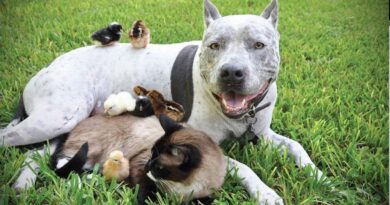What is Standards
What is Standards in Dog Breeding?
Standards in dog breeding refer to a set of guidelines and criteria established to define the ideal characteristics of a specific dog breed. These standards encompass physical traits, temperament, and behavior, ensuring that breeders produce dogs that conform to the breed’s established norms. The standards serve as a blueprint for breeders, helping them maintain the integrity and quality of the breed while also promoting responsible breeding practices.
Importance of Breed Standards
Breed standards play a crucial role in the world of dog breeding. They help maintain the unique qualities of each breed, ensuring that dogs possess the traits that make them distinct. By adhering to these standards, breeders can avoid health issues associated with poor breeding practices and contribute to the overall well-being of the breed. Furthermore, standards provide a framework for judges in dog shows, allowing them to evaluate dogs based on established criteria.
Components of Dog Breed Standards
Dog breed standards typically include several key components: appearance, size, coat type, color, and temperament. Each breed has specific requirements for these traits, which are detailed in the breed standard documentation. For instance, the standard for a Labrador Retriever may specify a short, dense coat, a friendly disposition, and a certain height and weight range. These components ensure that each dog bred meets the expectations set forth by breed enthusiasts and organizations.
How Are Standards Established?
Standards are established by breed clubs and kennel clubs, which are organizations dedicated to the promotion and preservation of specific dog breeds. These clubs conduct extensive research and collaborate with experienced breeders, veterinarians, and dog trainers to develop comprehensive standards. The process often involves input from various stakeholders, including breed enthusiasts and the general public, to ensure that the standards reflect the breed’s historical significance and future viability.
Impact of Standards on Dog Shows
Dog shows are a significant aspect of the canine world, and breed standards are central to their operation. Judges at these events evaluate dogs based on how closely they adhere to the established standards. This evaluation process helps promote high-quality breeding practices and encourages breeders to strive for excellence. Winning at dog shows can also enhance a breed’s reputation, leading to increased interest and demand among potential dog owners.
Challenges in Maintaining Standards
Maintaining breed standards can be challenging due to various factors, including changes in public perception, evolving breeding practices, and health concerns. Some breeds may face pressure to alter their standards to accommodate modern trends or address health issues that have arisen due to inbreeding. As a result, breed clubs must continuously assess and update their standards to ensure they reflect the best interests of the breed and its future.
Health Considerations in Breed Standards
Health considerations are increasingly becoming a focal point in the establishment and revision of breed standards. Many breeds are prone to specific genetic disorders, and responsible breeders are now prioritizing health testing and screening to mitigate these risks. By incorporating health considerations into breed standards, organizations aim to promote the overall well-being of dogs and reduce the prevalence of hereditary conditions within breeds.
The Role of the AKC and Other Organizations
The American Kennel Club (AKC) is one of the most recognized organizations involved in establishing and maintaining breed standards in the United States. The AKC works closely with breed clubs to ensure that standards are comprehensive and up-to-date. Similar organizations exist worldwide, each playing a vital role in promoting responsible breeding and preserving the unique characteristics of various dog breeds.
Future Trends in Dog Breed Standards
As society’s understanding of animal welfare and genetics evolves, so too will the standards for dog breeds. Future trends may include a greater emphasis on health, temperament, and the overall quality of life for dogs. Additionally, there may be a shift towards more inclusive standards that consider the diverse needs of dog owners and the changing roles of dogs in society. This evolution will require ongoing collaboration among breeders, organizations, and the public to ensure that standards remain relevant and beneficial.




